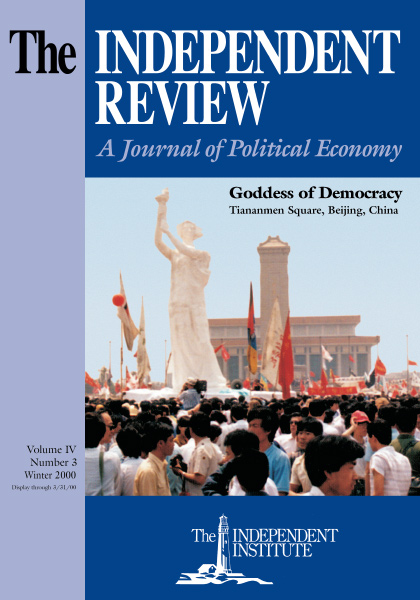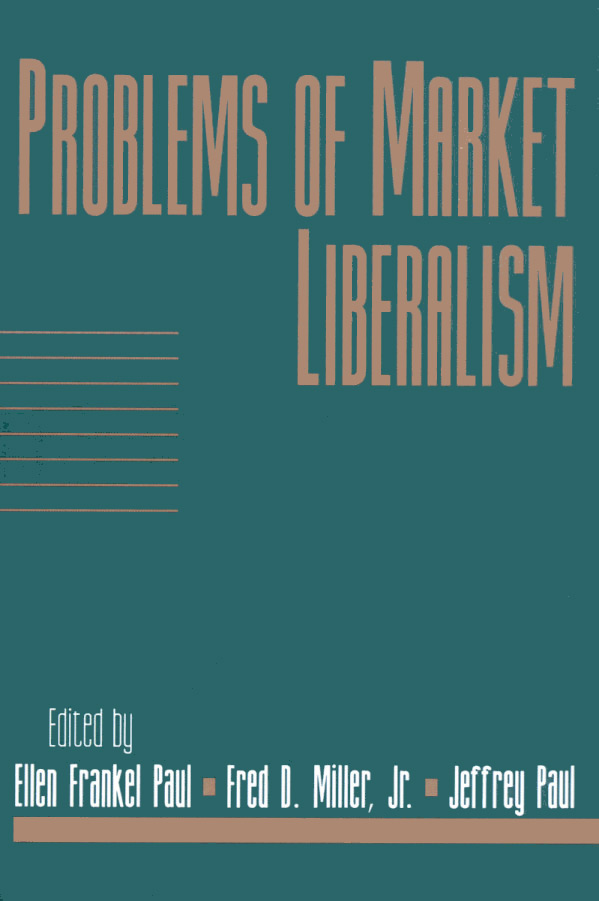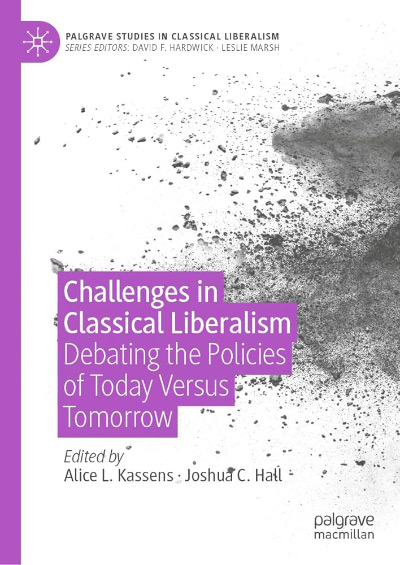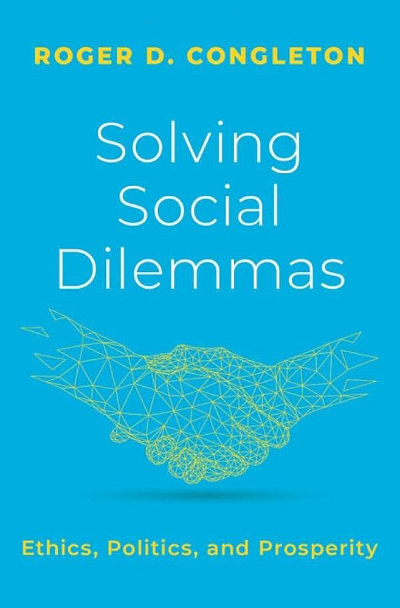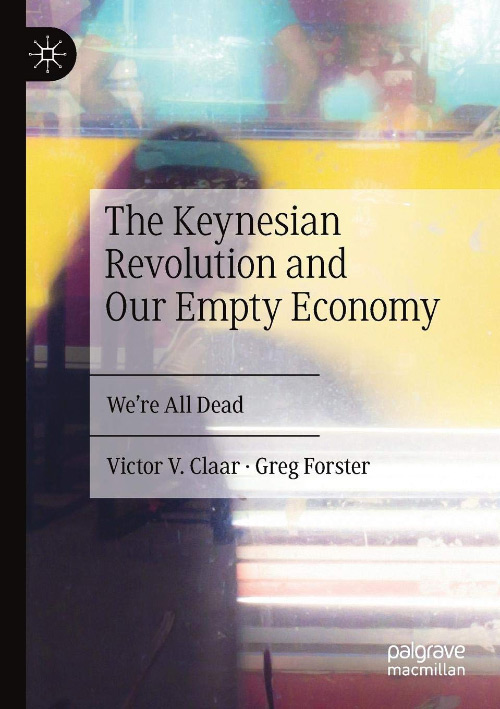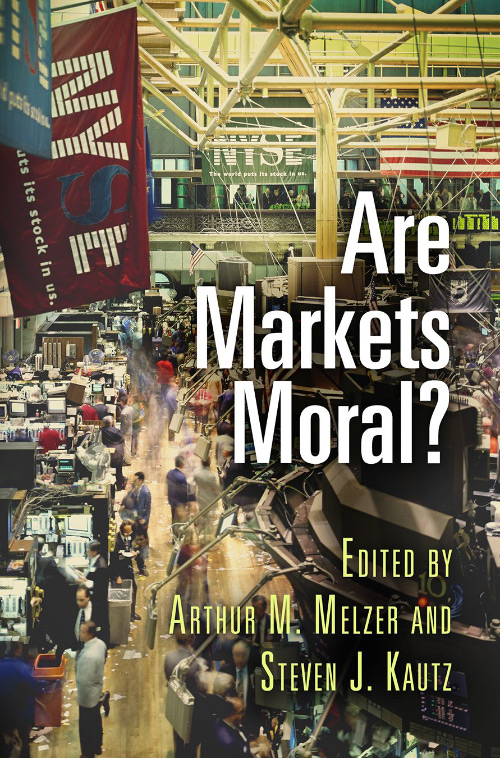Problems of Market Liberalism first appeared as the summer 1998 issue of the journal Social Philosophy and Policy. It is good that such valuable issues are made available to the public, for the quality of this journal over its comparatively short life span has been high, and the present volume is certainly no exception. Because it contains thirteen substantial essays, I shall have to be sketchy, confining my review to a few notes about several of the essays. The reader can profit from all of them, but I have picked out only those that illustrate some important general theme.
Gerald Gaus opens the volume with “Why All Welfare States (Including Laissez-Faire Ones) are Unreasonable,” an essay whose intriguing and plausible thesis is that policy initiatives in large modern democracies are virtually incapable of achieving rational objectives, and that this incapacity pertains especially to so vague and many-faceted a goal as the enhancement of human welfare. The incapacity owes much to uncertainty, which comes in two varieties: where there is a roughly knowable probability of success, and where there isn’t. Roughly known probabilities of success for public policies are always low; policies to whose success we don’t even know how to attach probabilities are disaster areas. Even when policy makers know what they want to achieve, they have no reason to believe their policies will achieve their goal and every reason to expect them to achieve many other things, some just the opposite of what was intended. Scary, and right.
The same theme is discussed by other contributors: Daniel Shapiro, “Why Even Egalitarians Should Favor Market Health Insurance”; N. Scott Arnold, “Affirmative Action and the Demands of Justice”; Thomas Hazlett, “The Dual Role of Property Rights in Protecting Broadcast Speech”; and Daniel Polsby, “Regulation of Goods and Drugs and Libertarian Ideals: Perspectives of a Fellow-Traveler.” What is especially valuable about these articles is the depth of empirical detail they bring to the discussion. Many readers will be aware of complaints that government programs are ineffective and expensive, but they may be surprised by the degree to which such programs not only harm the innocent and produce little or no benefit, but produce effects contrary to those ostensibly intended. These sobering essays can be read with great profit by anyone.
Shapiro’s argument illustrates another interesting feature common to many of these contributions: the discussion aims at middle-of-the-road citizens, the 95 percent who are neither radical libertarians nor communists. He argues that market-based (as distinct from free-market) health programs will better achieve the goals intended by national health-care programs. This showing is surely one of the most important contributions one can make to this entire area. American health care is badly misunderstood. It is by no means a free-market system, nor even in general a market-based program. And it takes all the wrong options. National programs are comprehensive rather than casualty-based, even though the poor need casualty insurance more than anything; these programs have important perverse effects for the huge sector of health care (estimated at 40 percent) that treats diseases brought on by lifestyle choices (especially smoking) rather than by sheer tough luck, genetic or otherwise; they actually favor the middle classes rather than those who need them the most; and so on. When one reads a careful, moderately expounded, extremely well researched piece such as Shapiro’s, one has to wonder how things ever got to be the way they areand to despair of their ever being repaired.
Arnold’s paper adds an extra dimension when he shows how the civil-rights legislation invoked in support of affirmative action programs, specifically those that amount to imposing quotas on hiring and the like, was promoted by its supporters with an interpretation diametrically opposed to its current one. Legislators specifically insisted that Title 7 was not to be interpreted as justifying quotas or their equivalent; but three decades later, Title 7 is exactly what judges appeal to when upholding affirmative action programs that effectively impose quotas. Arnold suggests two constraints on public policy making, which he calls Public Justification and Anti-Hijacking. The first stipulates that supporters of government intervention must at least make their case publicly and get a recorded vote of the legislature or the electorate for the intervention in question. The second requires that proponents of state action “must explain how and why their proposal will not permit state power to be systematically abused to further private interests at the expense of those disadvantaged by the policies in question” (p. 147). These requirements, as Arnold insists, seem reasonable and moderate. Yet affirmative action programs egregiously fail both testsis anyone surprised?leaving a serious question about how reform might be possible.
Hazlett details how the Federal Communications Commission’s anti-property orientation has worked to thwart the commission’s stated intention to open the airwaves to discussion, variety, and the like.
Polsby takes up the discouraging subject of how the regulation of pharmaceuticals by the U.S. government has wreaked havoc on the American public, costing thousands of lives, protecting large corporations, keeping up prices, and so on. He also points to the government’s utterly counterproductive and destructive “war on drugs” as a clear case of perversity run rampant.
The volume isn’t all nuts and bolts. Three articles proceed at the level of high theory. In “Measuring Opportunity,” Robert Sugden points out that contractarian arguments tend to be expounded on an assumption that individuals are trying to maximize something; yet the revealed-preference orientation of contemporary economics, holding that consumers show what they value just by choosing it, militates against the meaningfulness of such a claim. The assumption that individuals have stable and coherent preferences over all possible states of affairs, which goes along with maximization, is very difficult to sustain for describing real behavior in a meaningful way. Sugden’s suggestion is that it “would be sufficient if we could find some measure of opportunity such that everyone can be assumed to prefer more opportunity to less. But how such a measure is to be constructed, and indeed if any satisfactory measure can be constructed at all, remains to be discovered” (p. 60).
Eric Mack’s essay, “Deontic Restrictions Are Not Agent-Relative Restrictions,” will be tough for most readers, even those versed in contemporary philosophy. Save it for a long rainy day. The third theoretical paper, Robert Ehman’s “Natural Property Rights: Where They Fail,” is the only paper to show signs of major misunderstanding. Natural property rights, he holds, are meant to establish the initial conditions of legitimate agreement, and therefore cannot be made by agreements. Yet virtually all transactions proceed from initial conditions that are in turn based on prior agreements. If this argument works, it must be in its application to hypothetical conditions in the dim past. But even there, I would argue, morals can be entirely a matter of agreement, starting from strictly extra-moral premises. (For the argument, see my book The Libertarian Idea, 1988, part 2.) Ehman also argues that contract-type theorists have a problem with conflicting rights: their theories “may fail to adjudicate the disputes that arise when one person’s exercise of rights imposes costs that interfere with other persons’ exercise of their rights” (p. 283). But why isn’t that occurrence a defect in details of the application of rights, rather than in the underlying rights themselves? If we play our cards right, there will be no nonadjudicable disputes of that kind, because basic rights among people will not fundamentally conflict. Ehman assumes that natural rights behave like the incoherent legal systems with which we are all familiar. But certainly his exposition illustrates an important, though misconceived, criticism.
Roderick Long’s essay, “Toward a Libertarian Theory of Class,” raises the question, What is such a theory, and why do we need one, once we unhook the subject from Marx or from the Ancient Regime? Long distinguishes three libertarian outlooks. LibCaps (proponents of libertarian capitalism) view the problem of class as related to politicians and government employees who wield the powers of the state. But libertarian socialists such as Noam Chomsky single out capitalists, especially big ones, as the problem, not quite for Marx’s reasons but because, they insist, wealth buys power. Libertarian socialists and libertarian populists are “suspicious of free trade, usury, and finance capitalism,” whereas LibCaps tend to be traditionalists, holding strong religious and other conventional commitments yet avoiding the authoritarianism that has so defaced our century. Long suggests that most of us have been too lenient with large corporations despite their undoubted tendency to enlist government favors whenever opportunity presents itself or can be cultivated. We tend to oscillate on collective-action problems, claiming that defections will break up cartels even though we are confident that cooperation will carry the day among ordinary people. There’s food for thought here.
Loren Lomasky and Jonathan Macey, in different ways, deal with a problem that all libertarians should be worried about: if we are so obviously right, why does almost everybody reject libertarianism? Lomasky, in “Libertarianism as if (the Other 99 Percent of) People Mattered,” writing with his usual grace and elegance, suggests that we should stop saying things such as “Taxation is theft,” even if we can be forgiven for thinking it is. Baldly saying so overlooks too many differences between our conception of theft and what is ordinarily so called, and demeans one’s fellows at the same time. He concludes, “It can, however, be a matter of some joy if one conceives one’s station as being a participating member of a society of mostly reasonable and mostly civil individuals, and enjoying in virtue of one’s libertarianism a perch of honor in its 99th percentile” (p. 371). Macey, in “On the Failure of Libertarianism to Capture the Popular Imagination,” attacks the matter at its root, arguing that libertarians fail to understand people as they really are“insecure, risk-averse, and willing to sacrifice personal freedom and wealth to pay for social insurance delivered by inefficient, low-quality, government providers” (p. 411). What we should be arguing is not that risk aversion is irrationalit isn’tbut that free markets better provide what antilibertarian programs claim to deliver. We can point, say, to the Mormons, who are sturdily independent yet take excellent care of their poor and unfortunate fellows. Governments, by contrast, don’t really deliver the promised security. This essay is certainly a must-read for the aspiring libertarian politician.
Overall, the volume stands on the cutting edge in its combination of academically responsible yet generally down-to-earth analyses. There’s plenty to make one think, and plenty to equip the aspiring libertarian with intellectual weapons of a badly needed kind. By all means, read it. It won’t be a quick readit’s high-density materialbut it will repay the effort.
| Other Independent Review articles by Jan Narveson | ||
| Winter 2024/25 | A Short Defense of Immoderate Wealth | |
| Summer 2018 | A Short Note about Inequality | |
| Spring 2009 | Deleting the State: An Argument about Government | |
| [View All (4)] | ||

